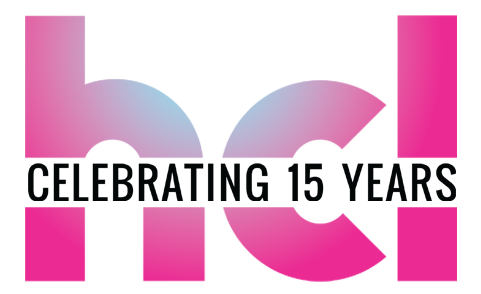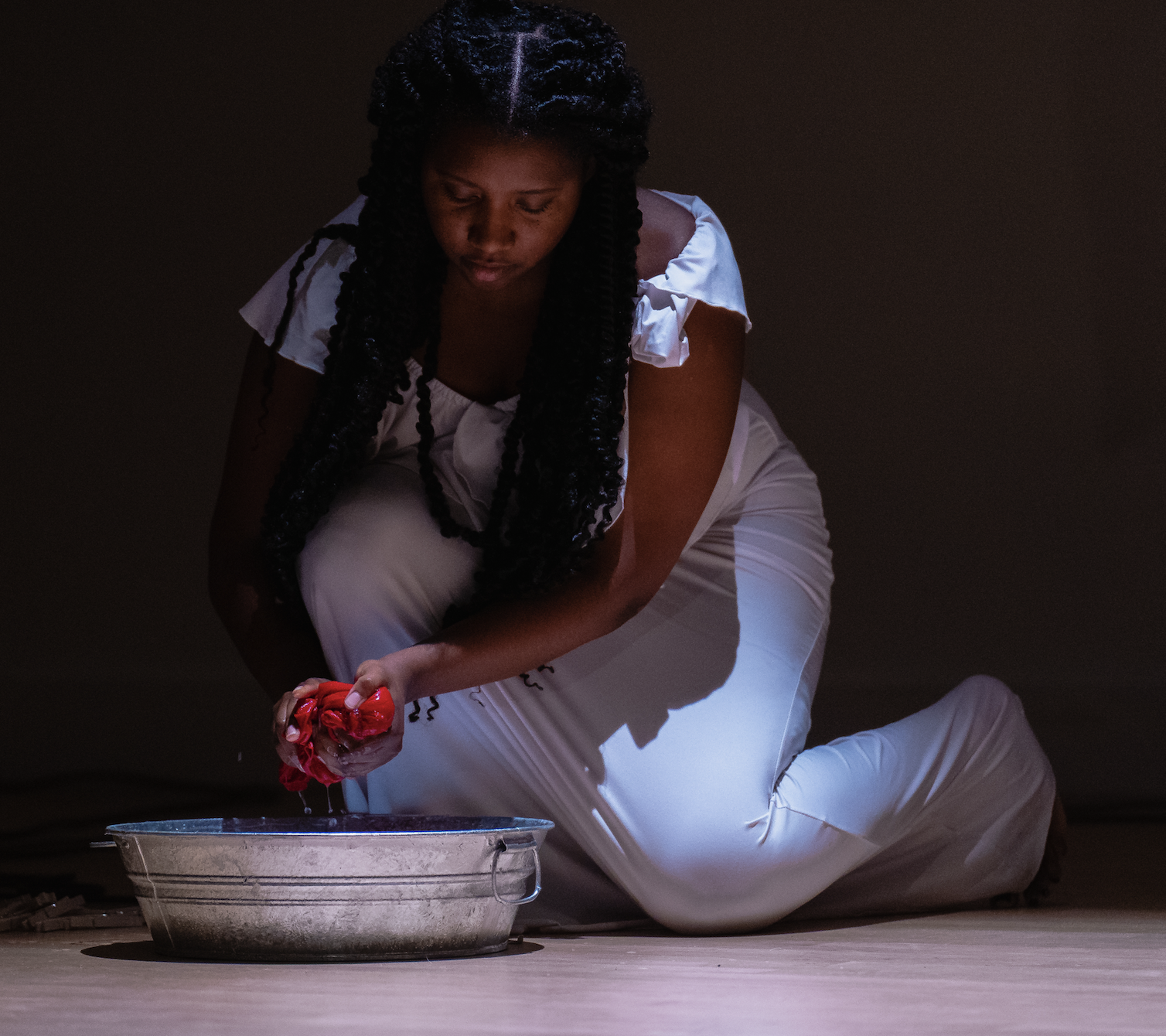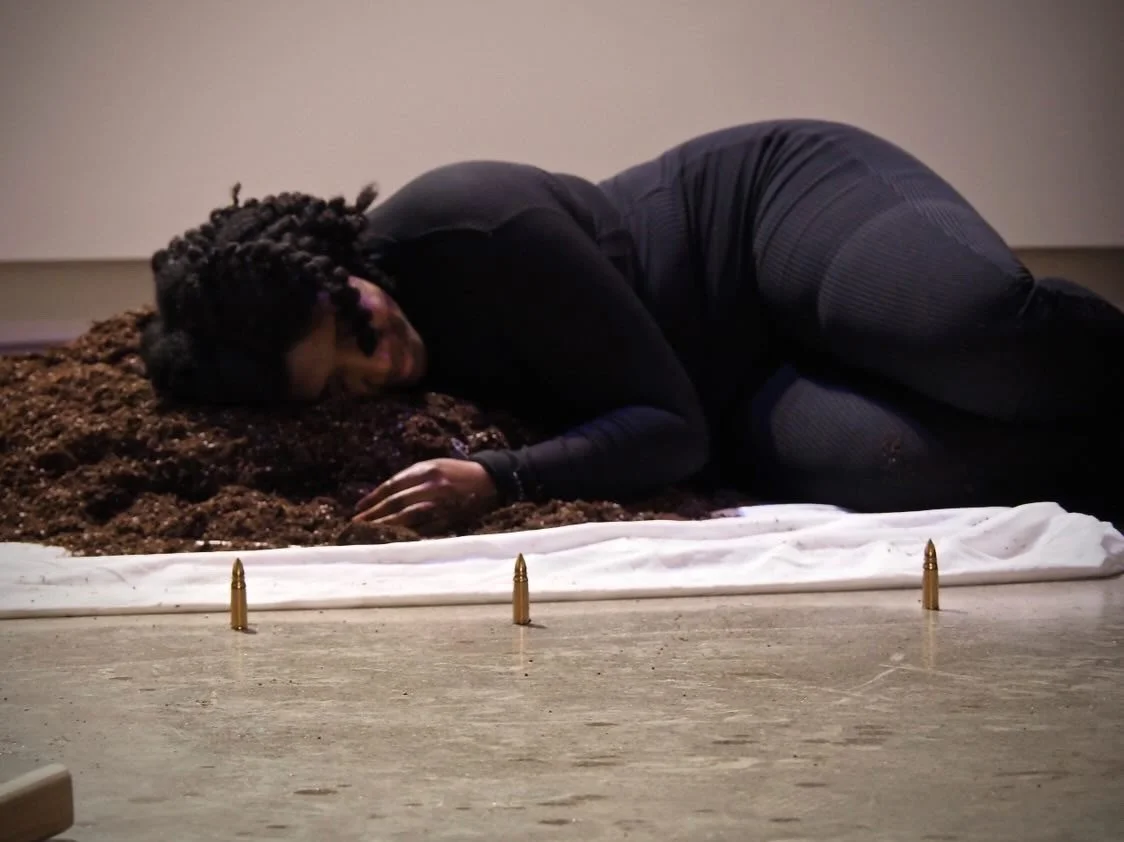HCL Interview Series: Carissa Lee
The HCL Artist Interview Series offers a behind-the-scenes look at the creative process, inspirations, and forthcoming projects of the artists within HCL’s residency programs.
Carissa Lee is a performance, sound, and theatrical artist. She earned her BFA in Theater from NYU and MFA in Performance from SAIC. The content of her work explores Blackness, intergenerational trauma, family archives, and mental health. Carissa integrates recordings, writing, and Black Southern culture to materialize grief, isolation, and hope. Interested in the science of spirit, she tests hypotheses with audiences, transforming the dynamic between performer and viewer into one of shared participation and discovery.
Sound Performance | Photo by Suliyman
High Concept Labs (HCL): In what ways does your work navigate the balance between concept, exploration, and execution?
Carissa Lee (CL): The difference between concept, exploration and execution feels unclear to me. Those words are all points along one ray so their differences melt into one another. I would say that conceptually I'm always starting with a feeling; either a feeling that I don't understand or a feeling that I don't have language for. Either way, this lack of understanding and/or lack of articulation forces me to explore how to fill the gap. This is definitely the roots, trunk, and branches of my work. I don't actually think about execution. I don't think execution is really in my vocabulary yet. I am more interested in attempts; In the trying. Whether it's an opening or a rehearsal, my goal is to keep the same air of exploration and experimentation and never really fall into a more finished “execution mode”.
HCL: Can you share more about the place that experimentation and risk has in your practice?
CL: My whole practice feels like experimentation. I truly believe my practice is at its best when it is all experimentation. The risk for me has more to do with learned societal restraints than with artistic expression. And the risk has more to do with my own anxiety around being seen than my feelings about the art itself being “risky”. This is because once I can get past my internal risk, I am unbothered by what the rest of the world thinks. Or rather, nothing feels as risky once I've convinced myself that the thought or the action is right for the world I'm building.
From “the people are coming”. Photo by Ricardo Adame.
From “rip and repair”. Photo by Anna Johnson.
HCL: How do you make use of time and space in your creative practice?
CL: I'm honestly still learning how to best use time and space for my creative practice. I admire people who show up for their practice every single day in a religious way. That is a goal of mine. That is how I hope to be. No, that is how I will be! I proclaim it in writing! However, in all honesty, right now my work shows up in ebbs and flows and I only show up for it when it's flowing. I feel like this is a disservice to how prolific my work could be, but you know, we're working on it. Mental health is real. And sometimes when I pick my battles, my creative practice takes a back seat to survival.
From “the people are coming”. Photo by Steph Patsula.
HCL: How do you see your work fitting into a broader creative ecosystem, and what role does collaboration play in your process?
CL: I feel that my work fits perfectly into a broader creative ecosystem. All the work I make comes from listening or is in reaction to what I'm seeing in the World At Large–The World At Large that includes my household, that includes my neighborhood, that includes my hometown, that includes social media, that includes news stories, that includes death, that includes memory. The World At Large is my constant inspiration for work. Therefore my work is always in conversation with the broader ecosystem.
Collaboration means so much to me. My background is in theater, which is an art form that is built fully on complex and layered collaboration. Every time I look at a project I'm thinking, “Who can I invite that will bring a magic I'm looking for?” I feel I work best when I'm in collaboration. Although I will go on an artist journey alone and I have gone it alone, I would rather go with a friend; go with a mentor; go with an opposite. Go hand in hand with a collaborator.
Open Lab: Carissa Lee | Thrival. Photo by Claire Staples.
HCL: Looking ahead, what new artistic risks or experimental directions do you anticipate taking during the residency and how do you envision your work evolving?
CL: Looking ahead, the new artistic exploration for me is around visual obstruction. I'm interested in how little I can show an audience. What is the bare minimum they can see and still understand? I'm hoping my work evolves to lean into silence; to lean into a knowing that exists without me having to explain every single detail.
Learn more about Carissa’s practice: https://www.carissapinckney.com/






